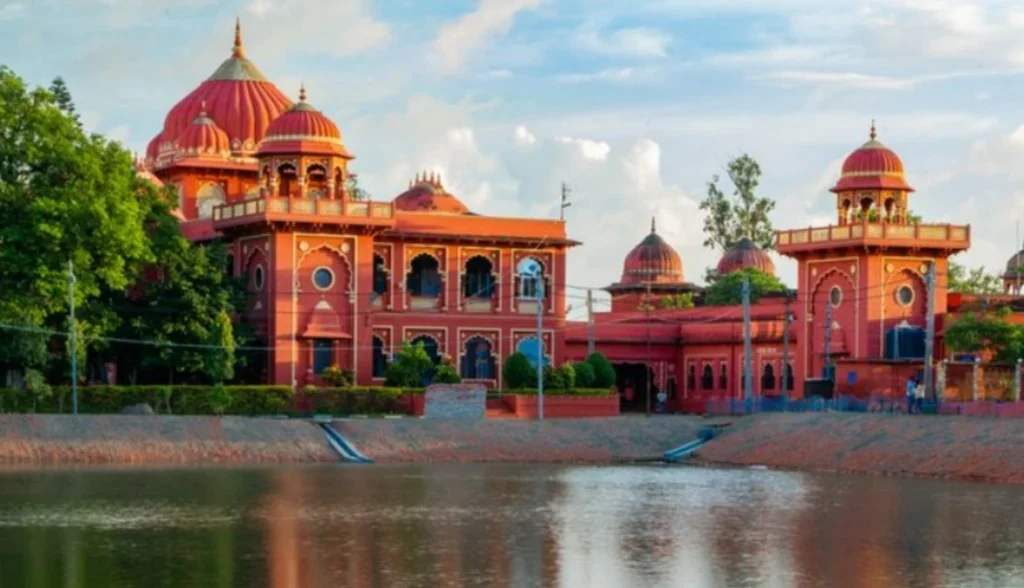“Discover Darbhanga District, Bihar—renowned for its rich heritage, royal legacy, and cultural brilliance. Explore its history, growth, and traditions.”

Darbhanga District: Legacy, Culture & Unstoppable Growth
Darbhanga District, located in the Indian state of Bihar, is a region steeped in history and cultural richness. Covering an area of approximately 2,279 square kilometers, this district is not only known for its historical significance but also for its contribution to the cultural tapestry of India.
One of the most notable aspects of Darbhanga District is its rich history. It was once the center of the Mithila region, a place renowned for its art, literature, and scholarly achievements. The district derives its name from the Darbhanga Raj, a powerful and influential zamindari estate that played a significant role in shaping the region’s history. The Darbhanga Raj was known for its patronage of art and culture, and its rulers were great supporters of Maithili literature.
The district boasts several historical landmarks, including the Raj Darbhanga Palace. This grand palace, built in the Indo-Saracenic style, stands as a testament to the opulence and architectural finesse of the region’s rulers. Today, it serves as a museum, showcasing a diverse collection of artifacts, manuscripts, and artworks that provide a glimpse into the region’s rich cultural heritage.
Darbhanga District is also famous for its religious significance. The district is home to numerous temples and shrines, attracting pilgrims and tourists alike. The Ahilya Asthan Temple, dedicated to the revered sage Gautam, is a popular destination for devotees. The Chandradhari Museum, located within the temple premises, houses a remarkable collection of sculptures and artifacts.
Another significant religious site is the Kamtaul Temple, which is believed to be the birthplace of the revered poet Vidyapati. Vidyapati, a Maithili poet, is renowned for his contributions to medieval Maithili literature. His works, primarily composed in the form of love poems and devotional songs, continue to resonate with readers and scholars today.
The district’s cultural vibrancy is further exemplified by its traditional folk art forms. Madhubani painting, a style of painting that originated in the Mithila region, is a hallmark of Darbhanga’s cultural identity. These intricate and colorful paintings often depict scenes from Hindu mythology, nature, and daily life. Artisans in the district have preserved and passed down this unique art form through generations.
In addition to its cultural heritage, Darbhanga District has made strides in education and healthcare. It is home to Lalit Narayan Mithila University, which has played a pivotal role in providing higher education opportunities to students from the region. The district has also seen advancements in healthcare infrastructure, ensuring that its residents have access to quality medical services.
Agriculture forms the backbone of the district’s economy, with rice, wheat, sugarcane, and maize being the primary crops. The fertile Gangetic plains in the region contribute significantly to agricultural productivity.
In recent years, Darbhanga has witnessed infrastructural development and connectivity improvements. The district is well-connected by road and rail networks, making it easier for both residents and tourists to access its various attractions.
Famous Places in Darbhanga District
Darbhanga District in Bihar, India, is dotted with a variety of famous places that showcase its historical, cultural, and religious significance. Here are some of the most notable ones:
Raj Darbhanga Palace: A magnificent palace built in the Indo-Saracenic style, it serves as a museum displaying artifacts, manuscripts, and artworks reflecting the region’s rich cultural heritage.
Ahilya Asthan Temple: A revered religious site dedicated to Sage Gautam, known for its spiritual ambiance and the Chandradhari Museum that houses an impressive collection of sculptures and artifacts.
Kamtaul Temple: Believed to be the birthplace of the legendary poet Vidyapati, this temple is of great historical and literary significance.
Madhubani Art Galleries: Experience the world-renowned Madhubani paintings, a traditional art form originating from the Mithila region, at various galleries and workshops throughout the district.
Lalit Narayan Mithila University: A prominent educational institution in the region, this university has been instrumental in providing higher education opportunities to students.
Hanuman Mandir, Darbhanga: A sacred temple dedicated to Lord Hanuman, known for its spiritual importance and vibrant celebrations during Hanuman Jayanti.
Shyama Kali Temple: A beautiful temple dedicated to Goddess Shyama Kali, attracting devotees and visitors for its religious significance and architecture.
Nargauna Palace: An architectural marvel showcasing a blend of Indian and European styles, this palace is an iconic structure in the district.
Chandradhari Museum: Located within the Ahilya Asthan Temple complex, this museum exhibits a remarkable collection of sculptures, manuscripts, and historical artifacts.
Singheshwar Sthan: A revered pilgrimage site for both Hindus and Muslims, it is known for its historical and spiritual significance.
Bhitar Dih: An archaeological site with ancient ruins, providing a glimpse into the district’s historical past.
Kakolat Waterfall: While not within the district boundaries, Kakolat Waterfall is a popular day trip destination known for its natural beauty and tranquility, located not far from Darbhanga.
These famous places in Darbhanga District offer a captivating blend of history, culture, spirituality, and art, making it a must-visit destination for those interested in exploring the cultural tapestry of Bihar.
Read More :-
